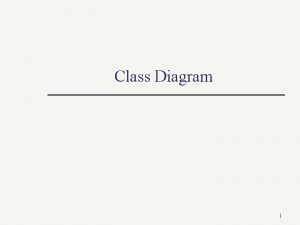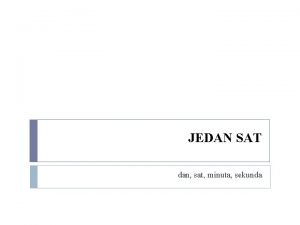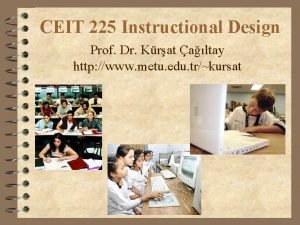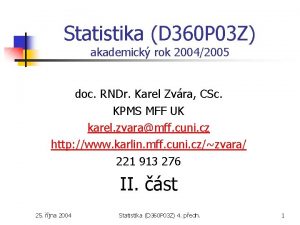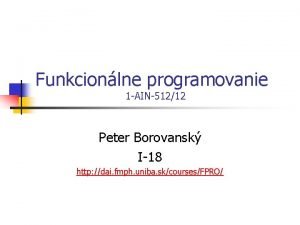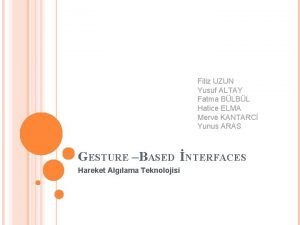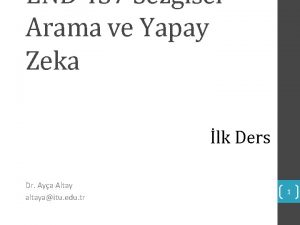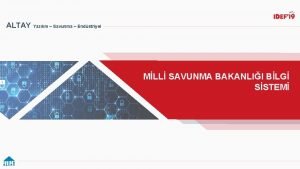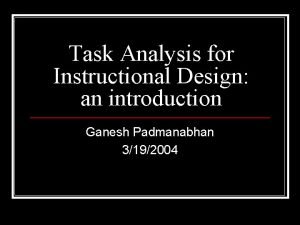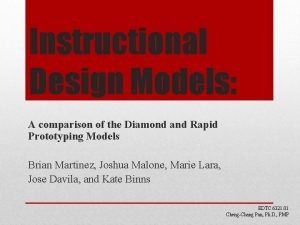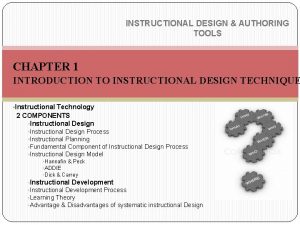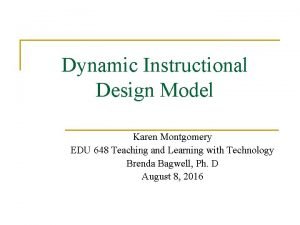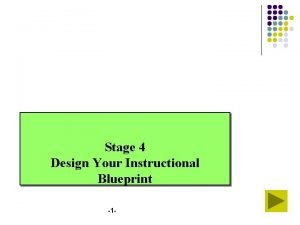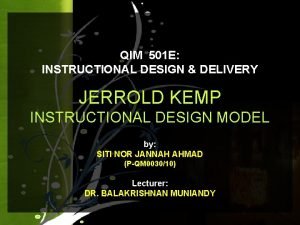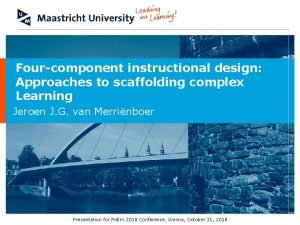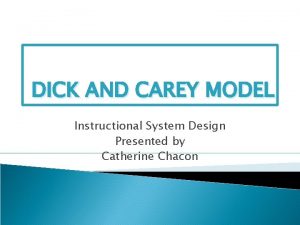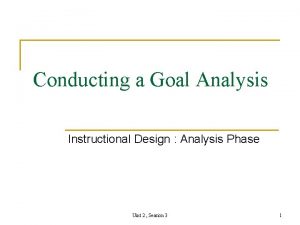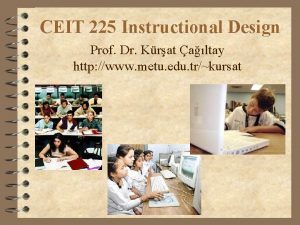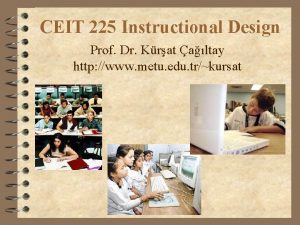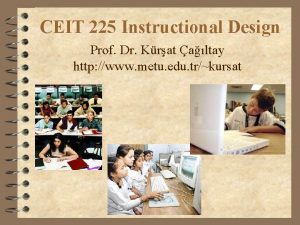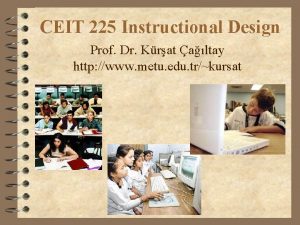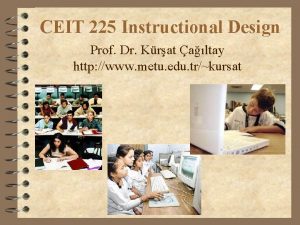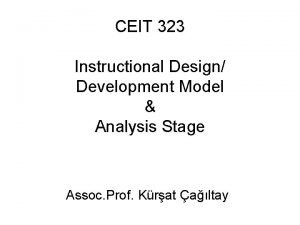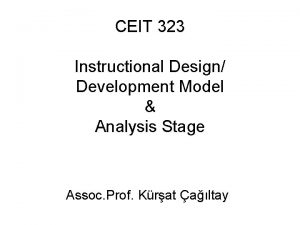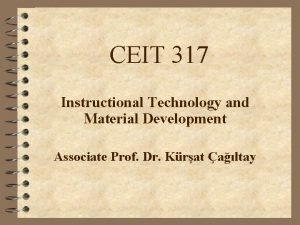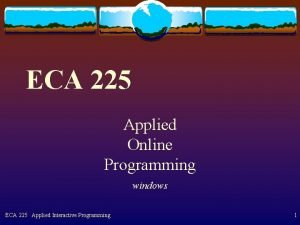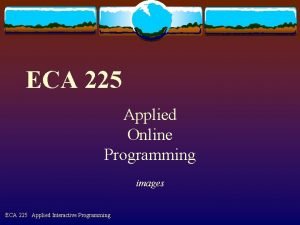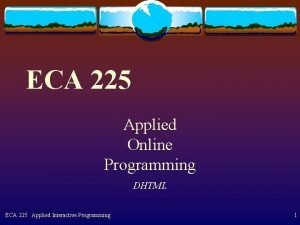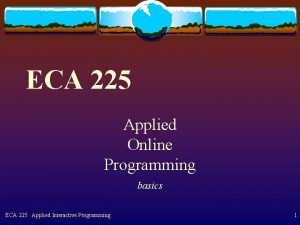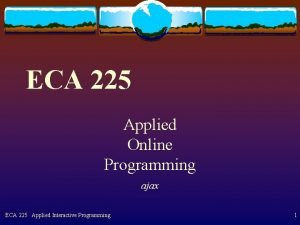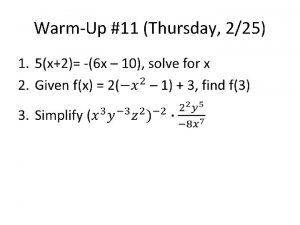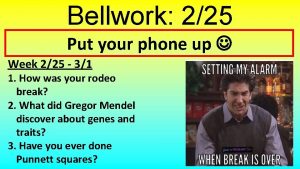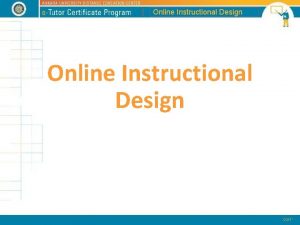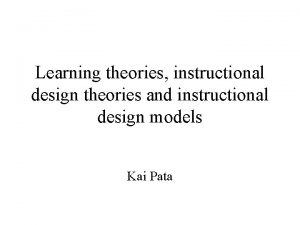CEIT 225 Instructional Design Prof Dr Krat altay























- Slides: 23

CEIT 225 Instructional Design Prof. Dr. Kürşat Çağıltay http: //www. metu. edu. tr/~kursat

Instructional Design (ID)? • The systematic process of translating principles of learning and instruction into plans for instructional materials and activities.

Your Task • Designing and developing a short Instructional module • To teach a topic from Physics course • Materials – A text material – about 4 pages, color print (with Photoshop) – A digital material (Adobe Flash) – A audio/video podcast

ADDIE Evaluate Implement Develop Design Analysis

Transition to self feeding

The major questions: • What are the objectives? • What skills, knowledge, and attitudes are going to be developed? • What resources and strategies will be used in the instruction? • How the content of the learning material will be structured? • How the learners' understanding and whether or not they have meet the instructional objectives will be assessed?

Design has some sub tasks • Designing Assessment • Designing Feedback • Designing Motivation • Designing the sequence of instruction • And, of course, designing the materials – Storyboard, Flow – Prototype paper materials

Designing Assessment • Assessment measures the competence or capability of learners • Thus assessment tasks should be written as soon as the objectives have been determined and before the content is prepared • Use a variety of methods to test learners' knowledge, skills, and attitudes • Self-completion tests, activities, assignments

Designing Feedback • learners need: – not just the right answer but also to see how it is reached; – information on their own performance, in particular where they may have gone wrong; – a clear picture of what they should do next and in what order; – confidence to move on to the next stage of learning; – confidence in assessing their own performance and thus in becoming more self-directed in their learning. • e. g. your reports

Designing the sequence of instruction • grouping of related objectives and activities and • there must be a sequencing of teaching activities.

Sequencing of content • Proceeding from what students know to what they do • • not know; Proceeding from concrete experiences to abstract reasoning; The logical or historical development of a subject; Important themes or concepts; Starting from unusual, novel or complex situations and working backwards towards understanding.

Sequencing instructional events (Gagne) Ch 7 , page 103 • Gain attention. • Inform learners of objectives. • Stimulate recall of prior learning. • Present stimuli with distinctive features. • Guide learning. • Elicit performance (Practice). • Provide feedback. • Assess performance. • Enhance retention and learning transfer.

Instructional Components Ø Pre-instructional activities – Motivating/gaining attention – Informing learner of objectives/purposes – Telling them what they already need to know Ø Content Presentation – Presenting the content – Guiding the learning Ø Learner Participation – Giving the learner opportunities to practice – Giving feedback Ø Assessment Ø Follow-through activities

Content Sequence The first step in developing an instructional strategy is identifying a teaching sequence and manageable groupings of content. What sequence should you follow in presenting content to the learner? It depends on your instructional analysis

Examples from fire extinguisher • Learning different types of extinguishers and emergency procedures: • How do you sequence?

One option 1. Demonstrate how to extinguish a fire using 2. 3. 4. 5. 6. a fire extinguisher Differentiate the types of fire extinguishers Describe the types of fire classes Select the correct fire extinguisher Describe the emergency procedures Describe how a fire gets started

Another option 1. Describe how a fire gets started 2. Describe the types of fire classes 3. Differentiate the types of fire extinguishers 4. Select the correct fire extinguisher 5. Describe the emergency procedures 6. Demonstrate how to extinguish a fire using a fire extinguisher

For the next week • Output 6: Documents for sequencing instruction and events of instruction(group work) (Use your book’s Ch-7) • Output 7: Storyboard for Flash material and General overview of Paper based material (group work)

Warning about the content • Do not just scan pages of your textbook for your design report’s content !

• Submit your Turnit-in similarity report by tomorrow.

Timeline • Analysis report done- April 10 th • Design report – May 8 th • Paper draft - April 17 th • Flash material and podcast draft – April 24 th • Final – June 11 th

After class • Meet with your facilitators

References • Slides are revised version of http: //lrieber. myweb. uga. edu/edit 6170/ppt/
 Class diagram
Class diagram Pola jedan sati
Pola jedan sati Dr krat
Dr krat Krát
Krát Fatma krat meme
Fatma krat meme Krát
Krát Fatma krat
Fatma krat Dr altay gezer
Dr altay gezer Ayça altay
Ayça altay Dr altay
Dr altay Altay yazılım savunma
Altay yazılım savunma Task analysis instructional design
Task analysis instructional design Instructional design models comparison
Instructional design models comparison Instructional design authoring tools
Instructional design authoring tools Dynamic instructional design model
Dynamic instructional design model Assure design model
Assure design model Instructional design blueprint template
Instructional design blueprint template öğretim tasarımı modelleri
öğretim tasarımı modelleri Kemp design model
Kemp design model Scaffolding instructional design
Scaffolding instructional design Dick and carey
Dick and carey Goal analysis instructional design
Goal analysis instructional design Assure model of instructional design
Assure model of instructional design Robert gagne biography
Robert gagne biography
